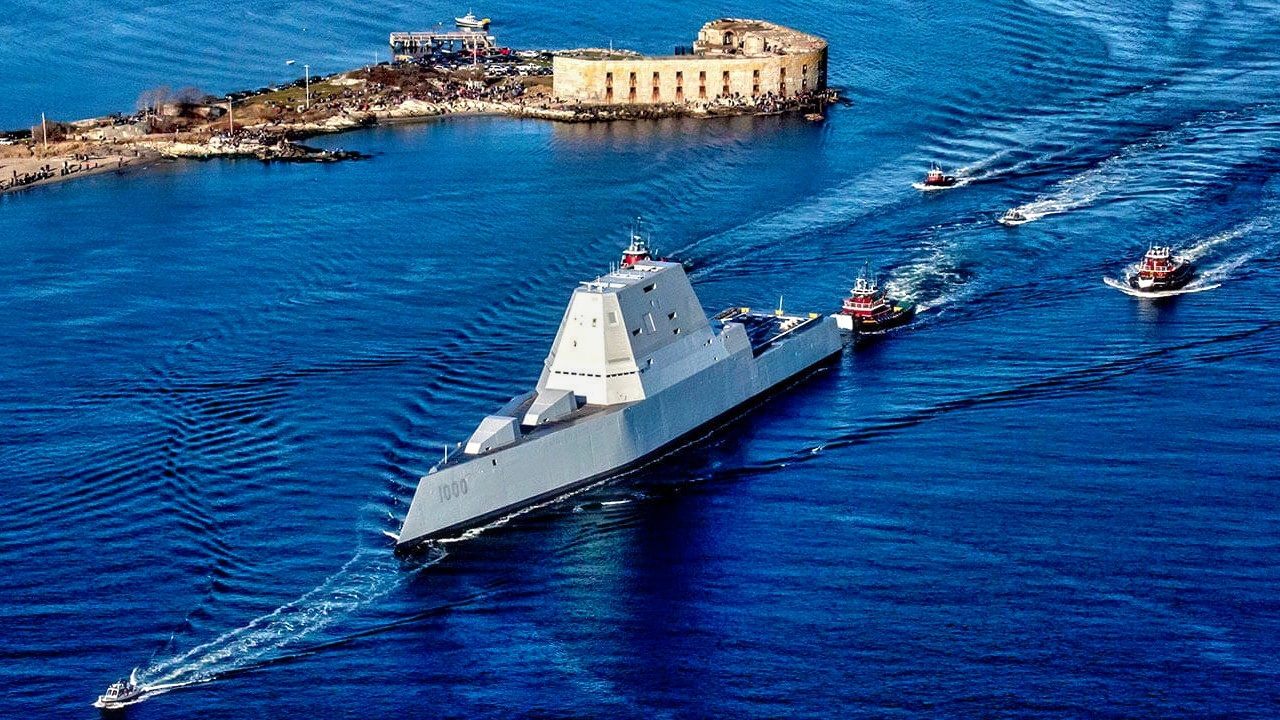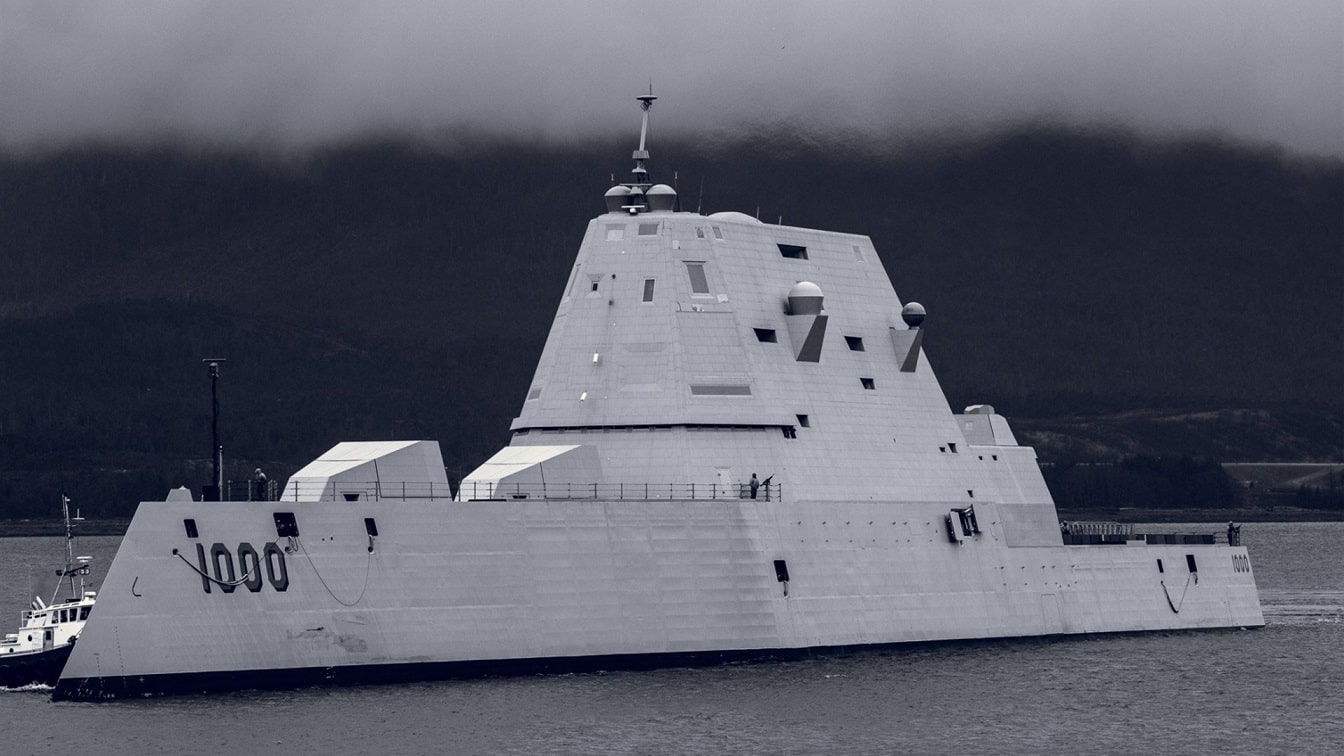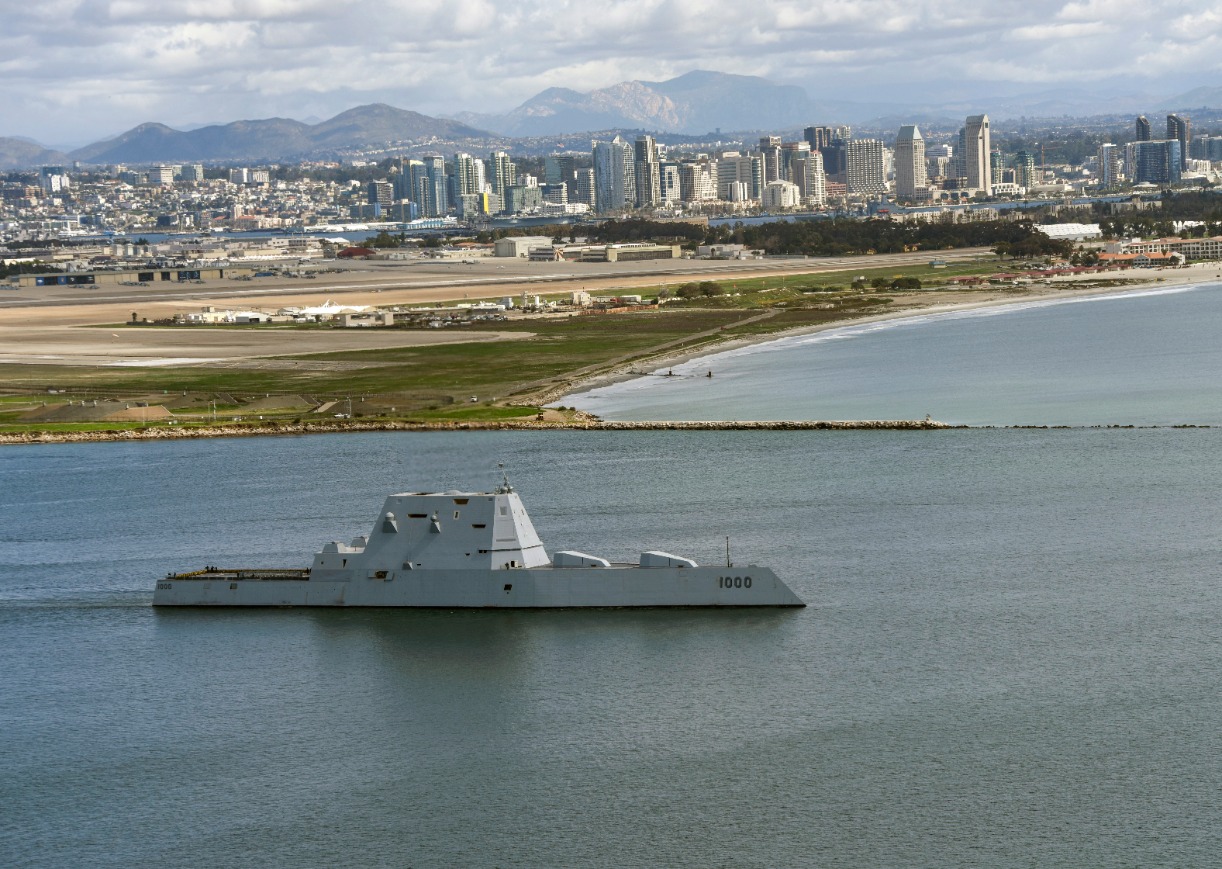
$24,000,000,000 Wasted: The Navy’s Zumwalt-Class Stealth Destroyer Nightmare Won’t End
What You Need to Know: The U.S. Navy’s Zumwalt-class destroyers, initially praised for their stealth and advanced technology, have become an expensive misstep. Despite their $24.5 billion cost, these ships face persistent functionality and performance issues, leading the Pentagon to consider adding hypersonic weapons and lasers to salvage the platform.

-Critics argue this approach follows the “sunk cost fallacy”—continuing investment in a failed program.
-Instead, focusing on long-range hypersonics deployed via submarines would better address evolving threats in contested waters. Some experts recommend retiring the Zumwalts, emphasizing taxpayer value and prioritizing effective defense solutions.
The Navy Won’t End Its Zumwalt-class Nightmare
The United States Navy’s Zumwalt-class destroyers were touted as the next evolution in destroyer technology. These otherworldly-looking warships, thin with angled hulls to enhance stealth, have turned out to be little more than a boondoggle. Ironically, the destroyers are named after U.S. Navy Admiral Elmo Zumwalt, probably one of the greatest and most innovative leaders of the postwar Navy.
But the ship that is named after him is a floating disaster. It’s as bad as the Navy’s other modern boondoggle, the Littoral Combat Ship (LCS).
A New Lease on Life?
But there might be a new lease on life for this massively expensive platform. Recently, the Pentagon has publicly ruminated about the prospects of installing hypersonic missile launchers, and possibly lasers, on the Zumwalt-class destroyers. Certainly, this would make these otherwise pathetic warships relevant. At the same time, though, one is entrusting highly experimental weapons systems being installed upon an unreliable platform, like the Zumwalt-class.

It’s not a good idea. It’s one of those ideas that sounds great on paper until it’s tried. Like the entire concept of a stealth destroyer in the first place.
The fact of the matter is that the Zumwalt-class is a failed program that was allowed to continue far longer than it ever should have been because of the sunk cost fallacy that dominates the minds of the Pentagon’s program managers and Congress. A sunk cost fallacy is a cognitive bias that occurs when an individual continues investing money, time, and effort into a project or program long after it has any benefit to that individual or group engaged in the sunk cost fallacy.
America needs a robust hypersonic weapons capability. It needs directed energy weapons (DEW), too. However, these systems need not be tied to a failed platform.
What the Pentagon is doing is no different than what the Russians are doing with their running joke of an aircraft carrier, the Admiral Kuznetsov.
They view these platforms as an investment that has not yet fully realized its potential and, if only a little bit more time, effort, and money were spent on the program, it’d eventually correct itself. This has been the mindset of the Russian Navy with the Admiral Kuznetsov.

A Sunk Cost Fallacy
Economists call it a “sunk cost fallacy” for a reason. It is truly a mistake, faulty logic, that the U.S. taxpayers have already been asked to spend $24.5 billion on three warships, costing around $8 billion per unit, that doesn’t work. After twenty years of trying to make these systems work, the Navy cannot.
One report has determined that the warships have underperforming engines, their weapons don’t function, which is why the Pentagon is talking about replacing them with experimental hypersonic and laser weapons, and those much-ballyhooed stealth capabilities do not live up to the hype, or the cost.
In other words, you can put lipstick on a pig, but it will still be swine.
At a time when American taxpayers are struggling to pay for their most basic needs, Washington needs to do its best to properly manage the tax dollars they are taking from those hard-working taxpayers. Striving to keep the Zumwalts operational, despite all the data proving how bad of a program this has been, is an insult to every single taxpayer who could have used that money far better than the Navy has, or will.
Surface Warships are So Passé
What’s more, the United States is facing increasingly contested environments wherein its surface warship fleet will be made essentially obsolete. Thus, the Navy needs to develop longer-range hypersonic weapons that allow for the surface warship fleet to stay safely out of the range of anti-access/area-denial (A2/AD) defenses that will ultimately sink their warships. Especially if the stealth capabilities on the Zumwalt-class destroyers are not all they’re cracked up to be.
The Navy should focus on building hypersonic cruise missiles that can be launched from their guided-missile submarines, in much the same way the Russians have done with their Yasen-class submarines. If the Americans are serious about hypersonic weapons for the Navy, placing them on any surface warship is a mistake. It is a massive error to place them on the failed Zumwalt-class destroyer.
In my humble opinion, just mothball these floating mess-heaps before something truly catastrophic befalls these warships.
About the Author:
Brandon J. Weichert, a National Interest national security analyst, is a former Congressional staffer and geopolitical analyst who is a contributor at The Washington Times, the Asia Times, and The-Pipeline. He is the author of Winning Space: How America Remains a Superpower, Biohacked: China’s Race to Control Life, and The Shadow War: Iran’s Quest for Supremacy. His next book, A Disaster of Our Own Making: How the West Lost Ukraine, is available for purchase wherever books are sold. Weichert can be followed via Twitter @WeTheBrandon
Image Credit: Creative Commons and/or Shutterstock.


